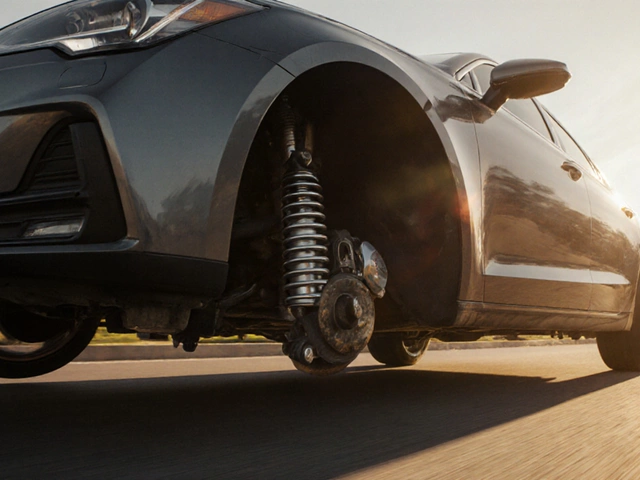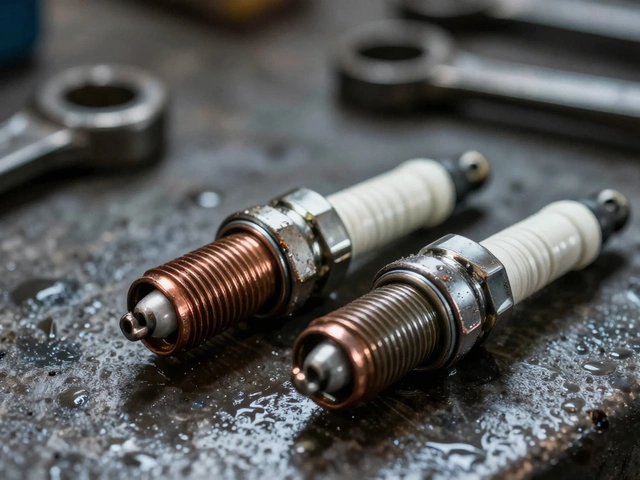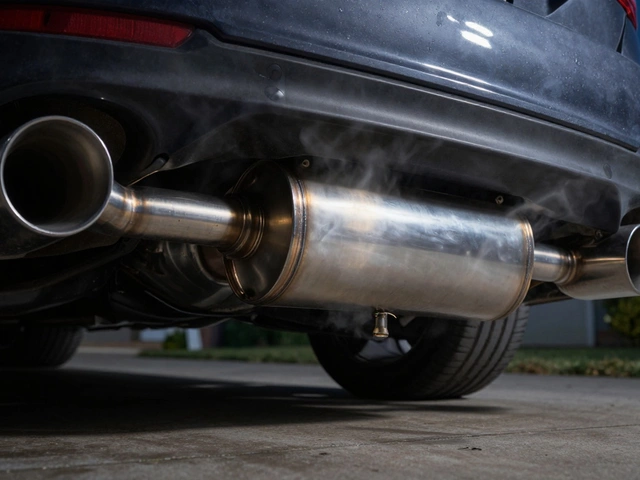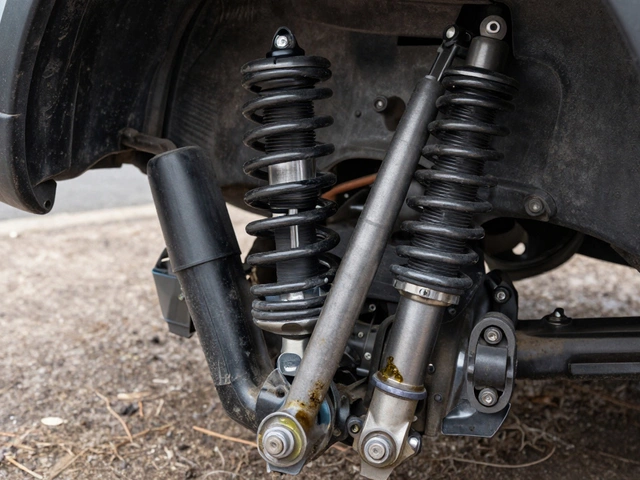So you've been eyeballing that sharp-looking 2 into 1 exhaust and you keep hearing claims about big power gains. Is it the real deal or just smoke and mirrors? Here’s the lowdown: a 2 into 1 (also called 2-1) exhaust system takes the two pipes coming from your engine’s cylinders and merges them into a single pipe before it exits out the back. Simple idea, but it can make a solid difference if done right.
The main reason people go for these systems—besides the cool sound—is performance. When you combine two exhaust flows into one, you improve what’s called exhaust scavenging. This means spent gases clear out faster, making room for fresh air and fuel. More oxygen in the mix can mean extra horsepower, and on some engines, you might see boosts in the 3% to 6% range. Of course, results always depend on your specific bike, how well the exhaust is designed, and whether you do a proper tune afterward.
- What is a 2 into 1 Exhaust?
- How Does It Affect Horsepower?
- Pros, Cons, and Real-World Numbers
- Tips for Getting the Most Out of Your Exhaust Upgrade
What is a 2 into 1 Exhaust?
If you look at most stock motorcycles, you’ll usually see one pipe for each cylinder, or sometimes a big, heavy dual setup—one exhaust pipe for each side. A 2 into 1 exhaust flips the script: instead of keeping both exhaust streams apart, it merges two separate headers into a single collector and pipe out the back. It’s called a "2 into 1" because, well, two pipes go in and one comes out. Simple, right?
The science behind it isn’t rocket science, but it matters. Merging the exhaust streams can change the pressure waves inside your pipes. This isn’t just a fancy detail—it can actually help clear exhaust gases out of the cylinders better, a thing called scavenging. When this works well, your engine breathes easier. That’s why you hear claims about horsepower gains with a 2 into 1 exhaust.
In case you’re wondering what these systems look like, they’re usually more compact than dual setups. Less weight means less strain for your ride to haul around. Here’s a quick comparison:
| Setup | Number of Pipes | Weight (avg.) | Common Use |
|---|---|---|---|
| Stock Dual Exhaust | 2 | 16-22 lbs | Cruisers, Tourers |
| 2 into 1 Exhaust | 1 | 10-15 lbs | Performance, Racing |
This design isn’t just for sport bikes. A lot of Harley riders swap to these setups for better torque and to shed a few pounds. You’ll often notice a single, bigger diameter muffler compared to two smaller ones. The look, sound, and performance all change when you go with a 2 into 1—sometimes a little, sometimes a lot. It’s not always ‘better’ for every rider, but if you’re after more punch and a unique rumble, this setup might be your ideal move.
How Does It Affect Horsepower?
If you’re hoping for a magic boost, here’s how it breaks down. With a 2 into 1 exhaust setup, the merging of pipes changes the way exhaust gases leave your engine. When two cylinders fire and push air out together, the design can help pull spent gases out of the other cylinder more quickly thanks to scavenging. The faster you clear out exhaust, the more fresh air-fuel mix can go in. That’s the whole game for horsepower gains.
Engineers and tuners have tracked these effects in dyno tests. You don’t always get huge increases, but it’s common to see an extra 2 or 3 horsepower on stock V-twin engines just from swapping to a well-made 2 into 1. That’s enough to actually feel it during acceleration, especially when paired with upgraded air intakes and a tune.
| Exhaust Setup | Typical HP Gain on V-twin | Notes |
|---|---|---|
| Stock exhaust | 0 HP | Baseline |
| Slip-on mufflers | 1-2 HP | Small gain, mostly for sound |
| 2 into 1 exhaust | 2-6 HP | Higher end possible with tuning |
The effects aren’t just about maximum horsepower, either. You’ll often notice more mid-range torque—perfect for street riding and quick roll-ons. That’s a big deal if you use your bike for daily fun instead of just chasing high rpm numbers.
Keep in mind: Not every 2 into 1 system is created equal. Brands like Vance & Hines, Bassani, and Cobra have proven track records for gains. Some cheaper systems just look cool and change the sound without real performance results. Always check real dyno charts before you buy—or you might end up with nothing but louder noise.

Pros, Cons, and Real-World Numbers
Alright, let’s get real about what swapping to a 2 into 1 exhaust does for your bike. Big promises are everywhere, but honest results and trade-offs stand out.
- Pros:
- Better exhaust flow leads to more efficient scavenging, getting rid of spent gases quicker.
- Extra torque, especially in the low-to-mid RPMs—right where street riders spend most time.
- Lighter than many stock systems, which helps with both performance and handling.
- Throttle response often gets sharper, giving your ride that instant snap when you twist the grip.
- Cons:
- Some bikers notice a loss of a bit of top-end power on certain engines—so drag racers might prefer something else.
- You can lose that classic dual-pipe look. Bit of a bummer if style is a big deal to you.
- Cheaper 2-1 kits might not fit right or mess with ground clearance. Always check reviews.
So, what’s the actual gain? On a Harley-Davidson Milwaukee-Eight 107 engine, tests have shown about 7-12 more rear wheel horsepower and up to 10 extra ft-lbs of torque after installing a quality 2 into 1 and tuning for it. For a Yamaha MT-07, folks have reported a jump of 3-5 HP at the rear wheel. The biggest gains show up if your engine is breathing better all around—meaning you’ve upgraded intake and done a fuel remap or ECU flash.
| Bike | Stock HP | 2 into 1 HP | Torque Gain (ft-lbs) |
|---|---|---|---|
| Harley M8 107 | 76 | 85-88 | +8 to +10 |
| Yamaha MT-07 | 68 | 71-73 | +3 to +6 |
| Honda Rebel 500 | 43 | 45-46 | +2 to +4 |
The gains aren’t massive, but you’ll definitely feel a punchier throttle and more responsive midrange. Downside? If you just bolt on and skip tuning, you’ll probably leave a lot of power on the table—or worse, run your engine lean. Always match your exhaust swap with the right tune.
Tips for Getting the Most Out of Your Exhaust Upgrade
Changing out your exhaust alone doesn’t guarantee better performance. You’ve got to do it right if you want the most gain for your money. Here are the most practical ways to get more out of your new setup:
- 2 into 1 exhaust systems work best with a proper tune. Once you switch pipes, your fuel and air mix might be off. That means it’s time to update your ECU (engine control unit) or use a fuel tuner so your engine runs just right and you actually feel the power bump.
- Pick the right diameter. Too small and your engine can’t breathe; too big and you lose low-end torque. Most street bikes get better gains with a mid-size collector—usually in the 1.75” to 2” range per pipe—unless you’re going all out on racing.
- Check your headers’ length. Short headers can boost high RPM power but may hurt low-end responsiveness, while longer headers usually help on the street for daily riding. Think about how you actually ride before picking a system.
- Don’t overlook heat shields. 2 into 1 setups can put out more heat in one spot. Installing proper heat shields keeps your legs—and wiring—safe from burns or damage.
- Pair it with high-flow air filters. Opening up your exhaust flow pairs well with letting more air in. Slap on a quality air filter and you’ll bump up your gains, especially after tuning.
- Always double-check the fit. Some cheap aftermarket kits are notorious for hitting your frame, oil lines, or electrical parts. Test-fit before you bolt everything in.
Getting the most out of your exhaust swap is about matching parts, tuning, and honest setup. Skip the guesswork, invest just a bit more time, and you’ll actually notice real horsepower instead of just a louder bike.








